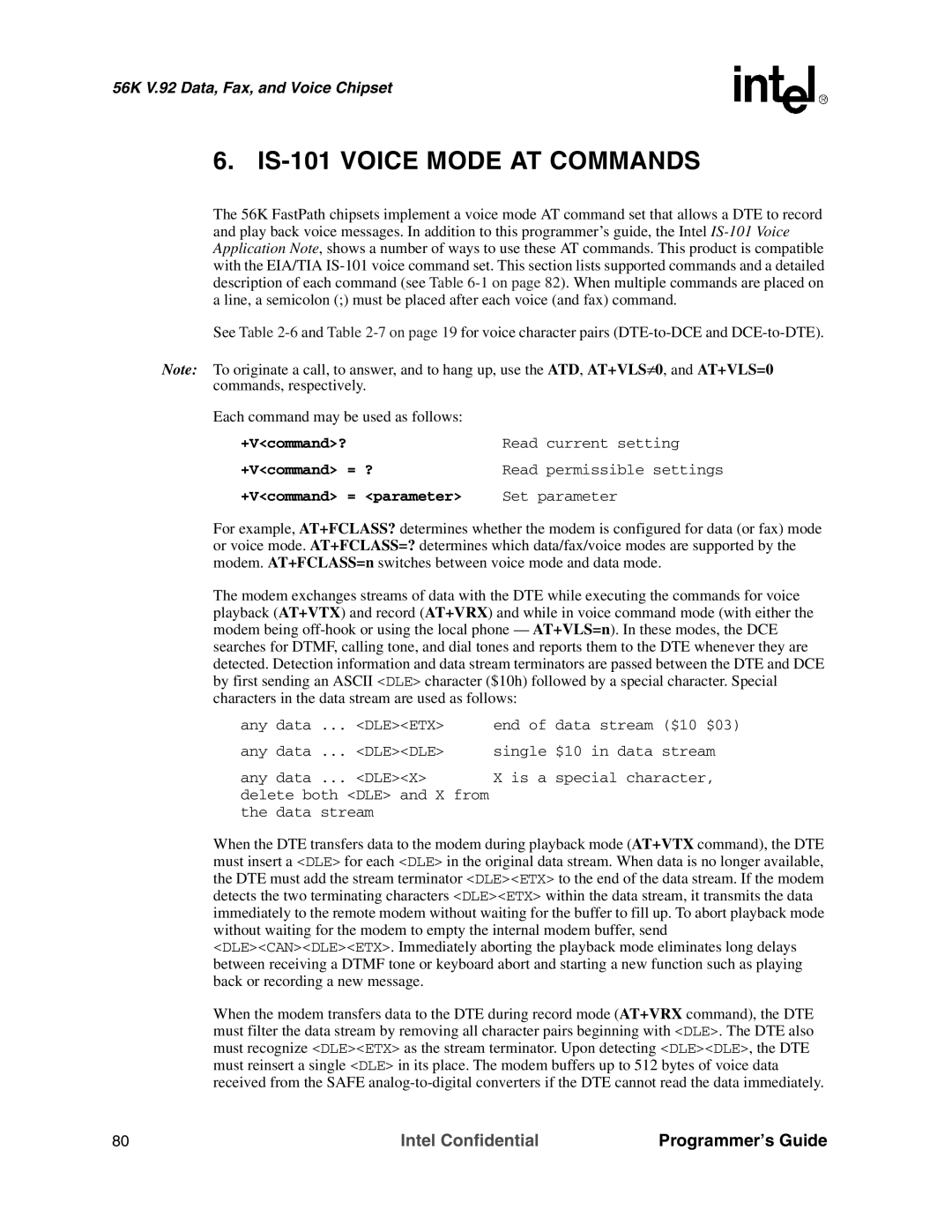56K V.92 Data, Fax, and Voice Chipset
6. IS-101 VOICE MODE AT COMMANDS
The 56K FastPath chipsets implement a voice mode AT command set that allows a DTE to record and play back voice messages. In addition to this programmer’s guide, the Intel
See Table
Note: To originate a call, to answer, and to hang up, use the ATD, AT+VLS≠0, and AT+VLS=0 commands, respectively.
Each command may be used as follows: |
|
+V<command>? | Read current setting |
+V<command> = ? | Read permissible settings |
+V<command> = <parameter> | Set parameter |
For example, AT+FCLASS? determines whether the modem is configured for data (or fax) mode or voice mode. AT+FCLASS=? determines which data/fax/voice modes are supported by the modem. AT+FCLASS=n switches between voice mode and data mode.
The modem exchanges streams of data with the DTE while executing the commands for voice playback (AT+VTX) and record (AT+VRX) and while in voice command mode (with either the modem being
any data ... <DLE><ETX>
any data ... <DLE><DLE>
any data ... <DLE><X> delete both <DLE> and X from the data stream
end of data stream ($10 $03)
single $10 in data stream
X is a special character,
When the DTE transfers data to the modem during playback mode (AT+VTX command), the DTE must insert a <DLE> for each <DLE> in the original data stream. When data is no longer available, the DTE must add the stream terminator <DLE><ETX> to the end of the data stream. If the modem detects the two terminating characters <DLE><ETX> within the data stream, it transmits the data immediately to the remote modem without waiting for the buffer to fill up. To abort playback mode without waiting for the modem to empty the internal modem buffer, send <DLE><CAN><DLE><ETX>. Immediately aborting the playback mode eliminates long delays between receiving a DTMF tone or keyboard abort and starting a new function such as playing back or recording a new message.
When the modem transfers data to the DTE during record mode (AT+VRX command), the DTE must filter the data stream by removing all character pairs beginning with <DLE>. The DTE also must recognize <DLE><ETX> as the stream terminator. Upon detecting <DLE><DLE>, the DTE must reinsert a single <DLE> in its place. The modem buffers up to 512 bytes of voice data received from the SAFE
80 | Intel Confidential | Programmer’s Guide |
